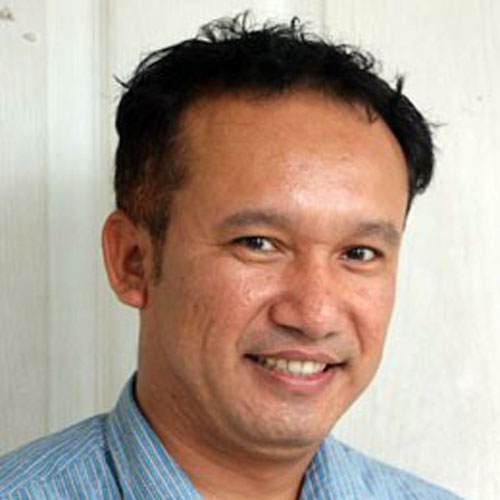Opinion
Meaningful measures
Despite having legal measures that address issues in disability, multidimensional implementation has been lacking
Obindra B Chand
Sustainable Development Goals (SDGs) 2030 recently promulgated the objective of ‘leaving no one behind’, including people with disabilities (PWD). Despite having multi-sectoral implications in society, disability has largely been overlooked in the arenas of public health and international development.
Globally, over a billion people with some form of disability are facing myriad challenges in different spheres of life. The situation is worse in developing countries where the rights of PWD are not sufficiently protected and lack availability to necessary support systems, and Nepal is no exception. According to the Census (2011), 1.94 percent of total population are PWD. Of this, physical disability is found to be the most common type of disability concentrated mostly in the mountain region. However, activists claim that the actual portion of PWD in our country is approximately 15 percent, which is much higher than the number shown by the census data. In addition, they live all across the country with barely the minimum or no services required to ease their everyday suffering.
At the policy level, the multi-dimensional aspect of disability is often overlooked. Due to lack of research, the depth and breadth of problems constantly encountered by PWD remain largely unknown and unaddressed by the concerned authorities.
The Nepal government first addressed the issue of disability with the introduction of Disabled Protection and Welfare Act 1982, in response to the UN promulgation of Action Concerning to Disabled Persons, 1982. The Act sought to provide several rights and facilities, including waiving educational fees and free medical examinations among others. Later in 1994, the Protection and Welfare of Disabled Persons Rule came into effect that led to the establishment of Disability Discrimination Committee under the Ministry of Women, Children and Social Welfare (MoWCSW), in order to formulate district level plans and programs for PWD. Subsequently, the Labour Act 1992 also sought to promote greater work place safety and appropriate working conditions for PWD.
Similarly, in 1996, the government enacted the Disabled Service National Policy, which expanded the existing provisions for PWD by pursuing a broad agenda that included free higher education and special education, promoting awareness of disabilities, and improving the quality of disability statistics to name a few. In December 2009, the government officially ratified the UN Convention on the Rights of Persons with Disabilities (CRPD). The CRPD aimed to complement and strengthen the existing laws and policies triggered by the Disabled Protection and Welfare Act 1982. Recently, the government also enacted the Disability Rights Act 2017, which not only has contextualised the legal measures of CRPD, but has also provided more rights and facilities for PWD.
Limited implementation
Despite all these legal frameworks and policies, people with disabilities encounter numerous challenges in their everyday lives. Historically, the policies and provisions of PWD have been hampered by weak implementation. As a result, these legal documents have merely been limited to official statements rather than practice. Therefore, PWD are compelled to live their lives beyond the existing legal and structural systems. In the absence of accessible environments, from homes to public buildings, they constantly struggle to meet even their most basic needs.
There could be countless reasons for such inefficiency in implementation. However, some of the key reasons could be: (a) historical neglect of issues regarding disabilities, (b) lack of awareness regarding the available provisions and facilities for PWD, (c) lack of faith of the majority of planners and policy makers and implementers in the productive capabilities of PWD when provided with appropriate opportunities.
Accessibility is one of the key challenges for people with disabilities. Inaccessible surroundings limit their access to mobility, health care, schooling, employment and ultimately, affect their productivity and well-being. The recently published report, Building Disability-Inclusive Societies in Asia and the Pacific: Assessing Progress of the Incheon Strategy shows that regardless of their economic status, PWD have mostly been denied access to public facilities, such as restaurants, public transportation, etc. The situation of PWD in Nepal is no less challenging and is further complicated by gender and spatial contexts. For example, if a rural woman with a physical disability seeks health care, her difficulties start with her physical ability to reach the building, more compared than the able-bodied, men, and their urban dwelling counterparts. These issues are ignored and often subjected to ridicule and humiliation. Recently, a young visually impaired person from Panauti shared that he was ridiculed and made fun of when he entered a ‘Female’ toilet in a public place. Persons with disabilities continue to experience multiple layers of discriminations that hinder their dreams of a dignified and decent living.
A change in apporach
Over the decades, there has been a positive shift from a charity-based to a rights-based approach towards disability. The government introduced the provision of a disability allowance as a part of social security for PWD. Likewise, in the last few years, at least two conferences—Conference on Disability: Evidence, Functionality and Independent Living, held in June, 2016, organised by Kathmandu University and UNICEF; and National Summit on Sustainable Development Goals and Disability held in December, 2017 organised by the MoWCSW, National Federation of the Disabled Nepal (NFDN) and AIN-Disability Working Group—were held on the themes of disabilities. The theme of the latter Summit was ‘Transformation towards Sustainable and Resilient Society for All.’ These initiatives have triggered discussion on disability related issues/themes on public forums. Similarly, some of the health facility buildings have been made wheel chair friendly. The ‘Career Expos’ were being conducted in 2012 and 2013 in Kathmandu with the aim of increasing PWD’s employment opportunities. These are also a few praise-worthy initiatives taken to promote accessibility, social security, and social inclusion. However, there is still a long way to go.
Formulating laws and policies itself is a vital step, but unless legal measures are complemented by operational system(s) through actual implementation, they alone cannot bring expected changes to the lives of PWD. The transformation of legal measures, until now, indicates some progressive enactment of policy implementation. Unfortunately, in the case of Nepal, due to various institutional limitations,
the lack of effective implementation is evident across different spheres of the society. Therefore, the pressing need at present is to explore and address the gaps from policy to practice, and make their implementation more effective. This will not only make the enacted laws and Acts more meaningful but also meet national and international goals of creating an inclusive society. Ultimately, it will contribute in making our society a more liveable place for all.
Chand works with Social Science Baha; his interests broadly cover Medical Anthropology and International Development




 8.12°C Kathmandu
8.12°C Kathmandu









%20(1).jpg&w=300&height=200)

